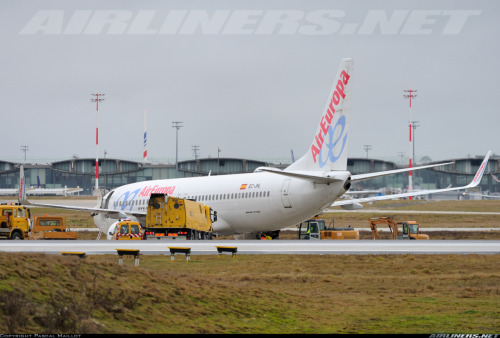Runway
Overrun Protection Systems
Runway Excursion
This might be a bit off topic, but while
looking at Safety nets I came across Runway Overrun Protection Systems (ROPS). Runway
Excursion is of serious concern to the Aviation Industry at the moment because
occurrences are increasing at a rate greater than the rate of global fleet
expansion. Put simply, runway excursion is an incident where an aircraft
unintentionally leaves the runway and can occur during takeoff or landing
phases of flight – ICAO defines runway excursion as “A veer off or overrun off
the runway surface”.
ROPS shows the position at which the aircraft
will stop along the runway (in wet or dry conditions) on the aircraft’s nav
display.
The point will move along the length of the
runway depending on the systems evaluation of aircraft approach profile,
aircraft breaking capability and landing distance available (LDA).
If ROPS predicts a Runway Overrun Occurrence a
visual warning is given to the pilot, along with a repeated aural alert:
“RUNWAY TOO SHORT”. Research has shown that when pilots are presented with a
non-standard situation, their instant reaction is to revert to a pre-programmed
response.
In the event of runway overrun it has been
found that pilots have often reduced reverse thrust to idle upon reaching
80kts, a standard procedure, rather than reacting to the non-standard situation
in front of them. For this reason, the ROPS system gives the aural cue “KEEP
MAX REVERSE” if the aircraft is at risk of runway overrun and is approaching
80kts.
Airbus has made their ROPS system commercially
available to other aircraft manufacturers in an attempt to combat the number of
global runway excursion incidents.
Today, Main Cause of Accidents is Runway Excursion
A Vast Majority of Overruns at Landing is Preventable
Main Contributing Factors of Runway Overrun at Landing
Auto Brake setting too Low.
Stabilization Not Achieved at
1000/500 ft.
Wind shear at low altitude.
Approach becoming unstable at low
altitude.
Long flare.
Long derotation.
Late selection of engine thrust
reversers.
Cancellation of reversers at 70kts.
Late/weak manual braking (w/o or
after AB disc).
Failure affecting the landing
distances.
Runway friction coefficient lower
than expected.
Etc.


No comments:
Post a Comment